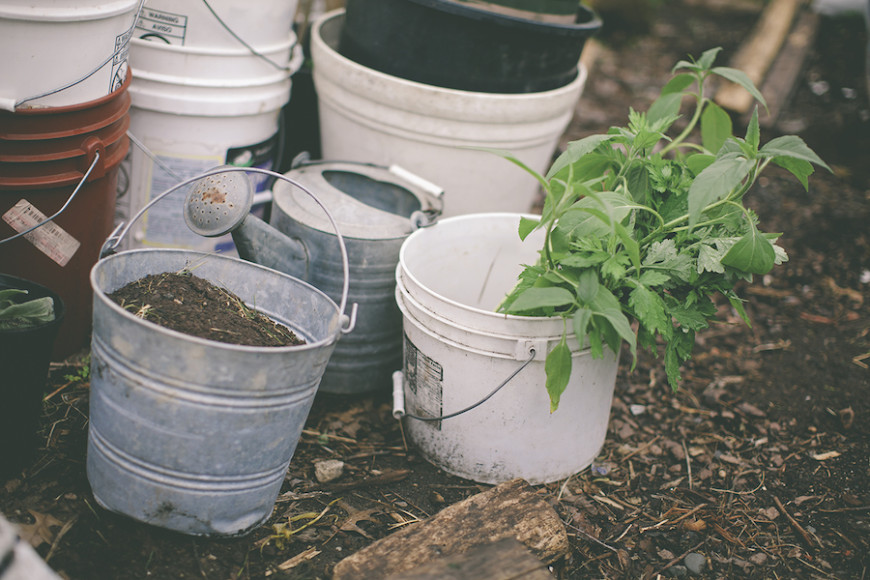
Try to imagine what the word “cookbook” meant before they become glossy, coffee table-ready paeans to food styling and photography.
The image that may come to mind is a tattered, text-only tome with fraying, yellowing edges, and hundreds of recipes with little to no expository aside from cooking instruction. These books typically existed only to serve a specific, utilitarian function: how to cook, or, getting more specific, how to cook French food (like Julia Child’s Mastering the Art of French Cooking), Italian food (Marcella Hazan’s Essentials of Italian Cooking), and so on.
Bounty from the Box: The CSA Farm Cookbook might not look spot-on like these earlier collections, especially since it’s newly self-published by Mi Ae Lipe. However, it does have more than 350 recipes, well over the publishing-house standard, and they serve a specific function: to make the best use of your CSA (community-supported agriculture) ingredients.
Lipe, a lifelong gastronome and avid cookbook collector, has compiled these recipes from various sources, much like a scrapbook. Instead of sourcing from neighbors and grandmas though, the recipes were mostly created by some of the world’s best cooking authorities including Yotam Ottolenghi and Mollie Katzen to food bloggers and farmers. After securing the recipes from these authors, Lipe worked with a recipe developer to test and perfect each one.
“I felt that doing it this way would make it a much stronger, more interesting collection in terms of recipe diversity, and not restricted to just one type of cuisine or style of eating,” she says.
So, a community cookbook for a community of those enthusiastic about CSAs. According to the USDA, this buying model—which was once scarcely given the star chef limelight—”consists of a community of individuals who pledge support to a farm operation so that the farmland becomes, either legally or spiritually, the community’s farm, with the growers and consumers providing mutual support and sharing the risks and benefits of food production.” Essentially, CSA members are “share-holders” and pay in advance to help cover the farm’s expenses for that season. In return, these members receive fruits of the farm’s labor throughout the growing season. Generally speaking, they’re pretty scrappy and heartfelt organizations.
The most common challenge and barrier to entry for CSAs is the unpredictability of the ingredients in any given share. Lipe’s book hopes to mitigate this through its deep well of recipe resources. What makes it a CSA cookbook is not just its inclusion of a wide range of vegetable varieties, but its consistent stories and tips throughout. We learn about dozens of individual CSA farms and farmers, as well as how they got started and what keeps them going. We also learn interesting tidbits on summer squashes, lemongrass, radishes and more. Lipe also shines a light on urban gardening initiatives and other farm and food programs around the country, painting a detailed portrait of a national community-based food movement.
“Farming is far more difficult work than most people ever realize,” says Lipe. “No one goes into CSA farming for the money—farmers will all tell you it’s their passion and life’s mission. We need to do everything we can to support that passion and their role in creating and sustaining better food ecosystems, as well as our own health.”
For her part, Lipe’s book was a labor of four years of love, and includes illustrations by Mary Woodin and vintage clip art throughout. There’s an extensive index covering most any fruit and vegetable you’ll likely hear of, and a helpful recipe by category key. All told, the book clocks in at just under 700 pages, which is a hefty load. But much like a CSA box itself, it’s a healthy bang for your buck at $35.
The following is a recipe from Lipe’s book, and is the creation of chef Travis Lett and Bon Appétit.
Charred Romanesco Broccoli with Anchovies and Mint
Serves 8
Romanesco broccoli is actually a type of green cauliflower, like broccoflower. It is hard to mistake it for any other member of the Brassica family, with its conical, chartreuse, fractal-patterned heads tightly arranged on a central stalk. It can be cooked like broccoli and cauliflower. Getting a good, dark sear on the Romanesco broccoli is critical to the flavor of the dish: There’s a nuttiness when you get that color on it.
½ cup olive oil, divided
1 large onion, minced
1 large carrot, minced
1 rib celery, minced
4 Fresno chiles or jalapeños, thinly sliced into rounds, seeded
Kosher salt
3 pounds Romanesco broccoli or cauliflower (about 2 medium heads), cut into florets
4 anchovy fillets packed in oil, drained
½ cup dry white wine
Freshly ground black pepper
½ cup torn fresh mint leaves
- Heat ¼ cup of the oil in a medium saucepan over medium heat. Add the onion, carrot, celery, and chiles; season with salt and cook, stirring occasionally, until the vegetables are very soft but not brown, 12 to 15 minutes. Let them cool.
- Preheat the oven to 450°F. Heat 2 tablespoons of the oil in a large skillet over medium-high heat. Add half of the Romanesco broccoli and cook, undisturbed, until deeply browned, about 4 minutes. Transfer to a roasting pan; repeat with remaining 2 tablespoons oil and remaining Romanesco. Add the anchovies and wine to the roasting pan; season with salt and pepper and toss to combine.
- Roast, tossing halfway through, until the broccoli is soft and the liquid is mostly evaporated, 25 to 30 minutes; season with salt and pepper and top with mint.



